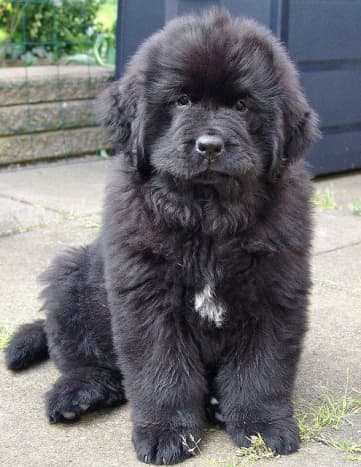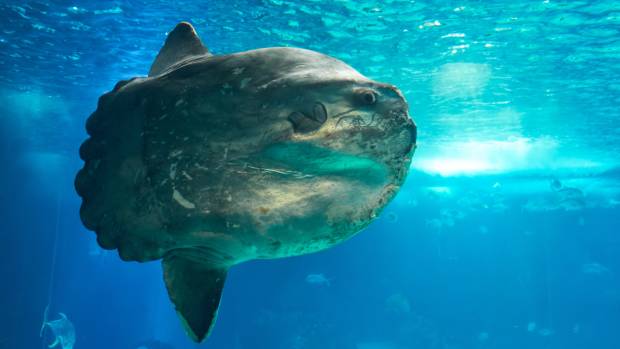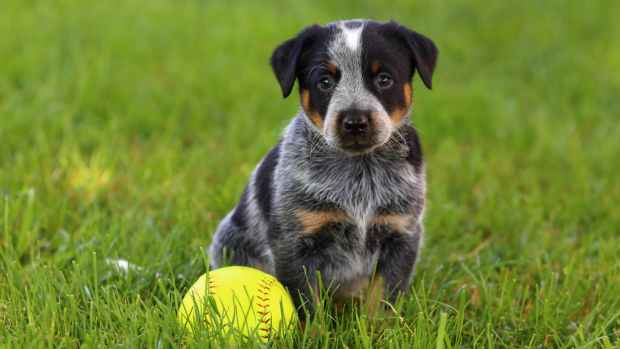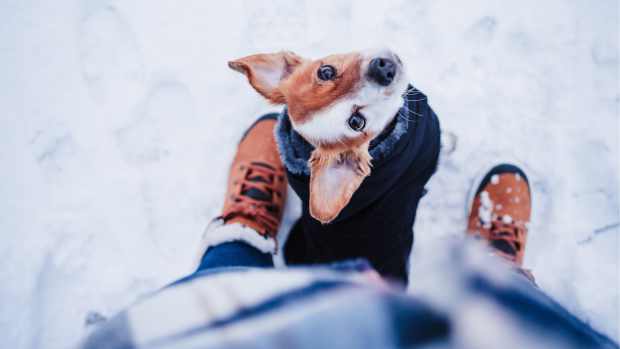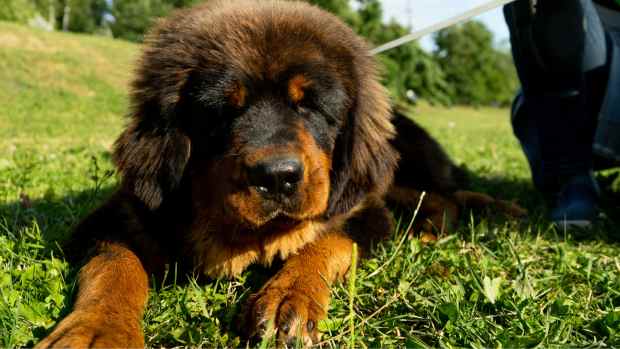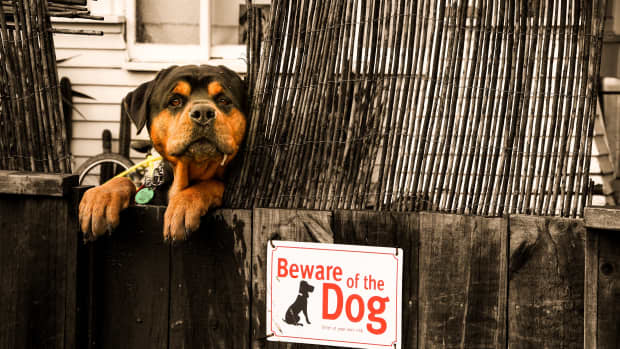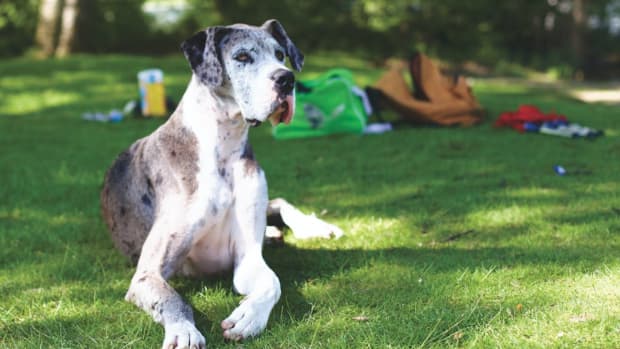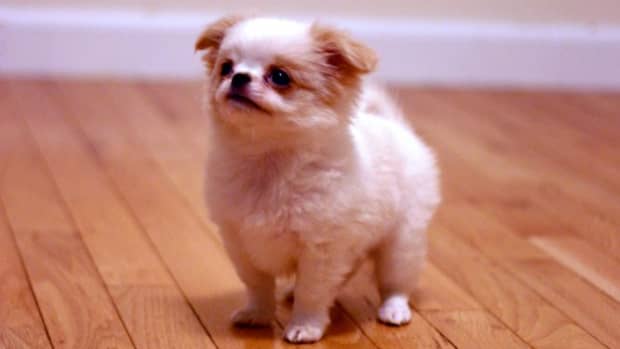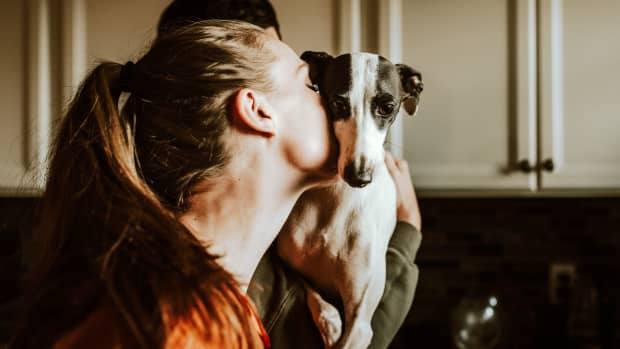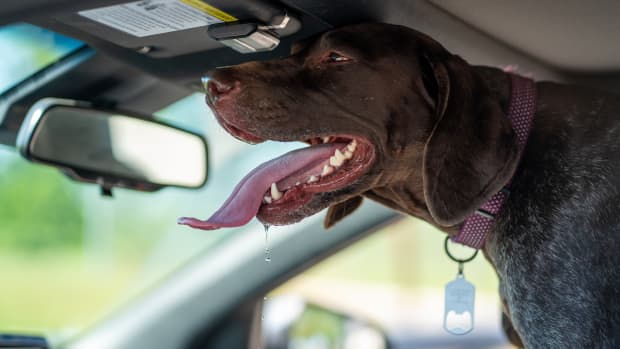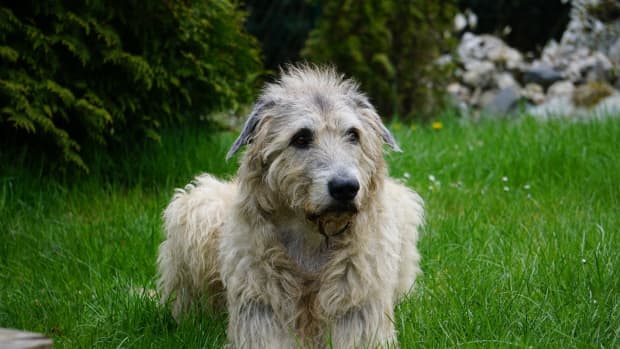5 Giant Dog Breeds That You Will Love
The 5 Best Giant Dog Breeds
What is not to love about a big dog? They slobber a lot, shed in great masses since they have so much hair, eat more than the kids, and take up so much space that they need their own rooms. (Actually, giant dogs usually like to be around company, so all they really need are their own sofas and beds.)
Giant dogs can also break your heart. They suffer devastating health problems, cost a fortune to take care of, and live short lives. Of course, they wouldn't break your heart if they weren't so great. All giant dogs are great choices, but which five are the best?
- Newfoundland
- St. Bernard
- Great Pyrenees
- Bernese Mountain Dog
- English Mastiff




1. Newfoundland
Newfies are number one, and there aren't many dog owners that would disagree. (Well, actually, there are. Almost everyone thinks that their favorite dog breed is the best.)
I don't think they are number one because they are the biggest. They usually only get up to 70 or 80 kilos (150-175 pounds), and there are plenty out there who are heavier. It isn't just because they are champion droolers, although they are. It isn't just because they are champion shedders, although they are.
So why do I think that Newfies are number one? Part of it has to do with their willingness to jump into the water and save a life. They have excellent lung capacity, a coat that is almost waterproof with webbed paws that allow them to swim faster, a powerful breaststroke, and of course, a big heart.
They're so good at swimming and so likely to jump in and save a kid that many mothers are willing to trust a Newfie with their children. They have even been used in crossbreeding programs that hope to spread this great characteristic to other breeds.
Newfoundlands do have some serious health problems, like hip dysplasia and heart disease. Only about 38% of them even make it to their tenth birthday. During that time, of course, you will have one of the best giant dog breeds.



2. St. Bernard
St. Bernards are probably the most well-known of all the giant dogs, and they are giant, around 70-120 kilos (150-250 pounds).
Everyone pictures them trudging through the snow with a flask of brandy tied to their neck, but they haven't been involved in that type of rescue work for many years; they never really carried flasks, and the last recorded case of a rescue in the snow was in 1897. They are a lot more likely to participate in weight-pulling sports now or just do their duty as great companion dogs.
Or maybe do their duty as guard dogs. They have a deep bark, and almost everyone remembers Cujo. They are great with kids, but if not socialized, they are a lot of work to handle.
Like a lot of giant dogs, St. Bernards are prone to hip dysplasia and elbow dysplasia. Some of them have eyelid problems, epilepsy, and heart disease. St. Bernards are even affected by an inherited form of bone cancer.
They probably live about 8 to 10 years, but only about 26% of them live until 10. They do drool, of course, but that is just because they haven't figured out how to open the flasks and get to the brandy.




3. Great Pyrenees
One of my favorite giant dogs is a working breed, not really bred to be kept as a companion, not really meant to be confined to a house. These giants (over 50 kilos, or 110 pounds) have been running around on the slopes of the Pyrenees mountains guarding sheep for hundreds of years. So why is the Great Pyrenees so great?
The Great Pyrenees does his job, just like all the other livestock guard dogs. A litter can be born in a barn, raised with lambs, and then turned into a low-maintenance dog that provides a special ambiance to the farm.
They can be great with kids on the farm, great with the stock they protect and other animals on the farm, and great with the farmer. But they can also be trained as companion dogs if you really must!
I like Great Pyrenees because of the dog´s resistant attitude to obedience training. Dr. Coren rated them number 64 out of 69 breeds tested for his book The Intelligence of Dogs. They are not stupid—they know their job is to guard livestock, and commands like “sit” and “stay” are frivolous.
Yes, they drool, but when they slobber on the field it is not much of a problem. Yes, they do bark at night when performing their “rounds”. And yes, they need to be brushed and groomed if kept around the house. Their coats are thick, and if you force them to do something (instead of fulfilling their chosen occupation, which is to lie around and do nothing), they can overheat.
They also have some problems like hip dysplasia and bloat. Most of their health problems are less serious, like ear infections and skin problems, and they usually live to be about 10 or 11 years old. They are usually great the whole time.





4. Bernese Mountain Dog
Bernese Mountain Dogs are great farm dogs. They are large enough to pull a cart, smart enough to bring the cows home, and docile enough to look after the kids. (They do need to be socialized, like any breed of dog. Training a dog this big is also a good idea.)
They are giant, but not as big as a St. Bernard. Males usually weigh up to 50 kilos (110 pounds) and females just a little less. They do look just as solid, however, just like all the dogs on this list.
Bernese Mountain Dogs have a lot of health problems, especially for farm dogs. Almost half of them die from cancers like bone cancer, lymphosarcoma, fibrosarcoma, and mast cell tumors. They also have problems like hip dysplasia, cruciate ligament ruptures, and arthritis. The breed also has several inherited eye diseases.
They only live to about 7, and only about 28% even make it to 10. Part of that may be due to the fact that they can become lame when quite young. If they were small dogs, the owners would be able to handle it. A giant dog is a lot to move around. Berners are worth it.



5. English Mastiff
This calm giant is almost as famous as the St. Bernard. He is famous for his huge build (anywhere from 70-110 kilos, or 150-240 pounds), his massive head, his good nature, and his black mask. The Mastiff may not be the tallest giant breed, but he is definitely the biggest.
One English Mastiff holds the record for the heaviest dog. He weighed 156 kilos (343 pounds) as an adult in 1989 and was well over 2 meters long! (8 ¼ feet). Before that time, the Mastiff almost died out, but they are now an almost popular dog breed. (Well, at least considering their size!)
Like most big dogs, the Mastiff has some serious health problems. They are prone to hip dysplasia, bloat (twisted stomach), thyroid problems, and some eye diseases. Fast growth is normal, so they need only mild exercise when young.
Some Mastiffs also tend to become obese. They need a soft dog bed so as not to get hard calluses and fluid pockets (hygromas) on the elbows. Mastiffs live about 7 years but sometimes make it to 10 or 11. If you want to read about some suggestions that might help you keep your dog around longer, read Dog Breeds with Short Lifespans.
Finding That Giant
Most of these dogs have similar ancestry and act a lot alike. They are probably all descended from the Tibetan Mastiff and have been brought in to cross with each other when their numbers have been threatened.
If you like what you hear about these dogs and are interested in finding one, be sure to call your local animal shelter first. Some people obtain one of these giant dogs without being aware of how much extra it is going to cost in food and medical bills. They end up surrendering the dog to the humane society, so a few are available. Not always, so you may need to keep looking.
You can also check Petfinder.com. They will give you an idea of the giants available in the cities and states closest to you. If you are willing to get an adult, you should search for a breed rescue. (Be careful because some puppy mills are now selling their dogs through the guise of breed rescue. Make sure you investigate the rescue thoroughly before donating money to them. If they demand a large amount of money as a "donation," then they are probably trying to sell you a dog.)
If you want a puppy and are not able to find what you want through a rescue, then you can try to go to a dog show and chat with some of the breeders that have the type of dog you like. Many of them also have websites so that you can look at the puppies and parents, but you should ALWAYS go to the location and look at the dogs before sending money.
Do not order a puppy from an internet site that sells multiple breeds. You may end up being scammed and never get the puppy you paid for, or if not, you will end up supporting a puppy mill and puppy shipping and warehouse operations. Finding a giant dog is worth it, though. Are you ready to have your heart broken?
With Big Dogs Come Big Responsibilities
Coming up with a list of the five best is not easy. There are a lot of great dogs that aren't on here, like the Great Dane, a popular dog among my German neighbors, and the Irish Wolfhound, one of my favorites.
I would really like all of these dogs to live longer and stay healthy. I do not have any secrets to tell you, but I do encourage you to research how to help your dog live longer.
More About Dogs
- Five Great Low Maintenance Dog Breeds
Are you looking for a low-maintenance breed of dog? Here are five dog breeds that all need basic care, but are also good at taking care of themselves. - Five Best Dog Breeds for Women Living Alone
Do you live alone and need a good companion to protect you? Here are five great choices. - Five Dog Breeds for People That Like to Be Alone
If you are in search of a solitary life, you should consider one of these dogs. Want to keep a breed of dog that really will guard your home, even from the meter reader? Try one of these five!
Questions & Answers
Question: Do you think my Great Pyrenees/Newfoundland pup will be a good girl to train to be a service dog for my high anxiety Intellectually Disabled and Autistic kids at school?
Answer: Newfoundlands are very good with kids, and Great Pyrenees are great dogs, but I cannot tell you if she will be a good match for those kids or even serve well as a service dog. As puppies age they change, which is why so many service dogs end up failing their training and being rehomed as pets.
Question: How can I train my dog not to jump?
Answer: I have several good alternatives, as well as a bunch of methods I do not recommend and would never use on one of my own dogs here: https://hubpages.com/dogs/Dog-Training-Tips-Jumpin...
Question: What is the biggest dog breed?
Answer: The tallest dog breed is the Great Dane or Irish Wolfhound, depending on which year the dogs are being measured. The heaviest dog is the English Mastiff.
© 2013 Mark dos Anjos, DVM
Comments
Tommi Grace from Woodward on March 15, 2019:
I love your blogs!
Mark dos Anjos, DVM (author) from The Atlantic Rain Forest, Brazil on August 31, 2018:
Ramgirl, there are DNA tests, or you might put some photos of him on one of the websites and ask readers at Quora to give you their opinion.
Ramgirl on August 31, 2018:
Just rescued a big boy,,really would love to find out what breeds he consists of
Mark dos Anjos, DVM (author) from The Atlantic Rain Forest, Brazil on March 20, 2018:
The best way is to train your dog to sit. When she starts to jump up, give the sit command and lean down to praise her. If you want some other ideas go to https://pethelpful.com/dogs/Dog-Training-Tips-Jump...
Lily on March 20, 2018:
How do I train my dog not to jump on people???
Jerry walters on February 25, 2018:
we love our great Pyrenees’s
2 year old rescue who will be 4 in may
Mark dos Anjos, DVM (author) from The Atlantic Rain Forest, Brazil on December 03, 2017:
Shopping Snob--you are not correct. Just because that is the case where you live, most Bernese do not live that long. Do some research on your own
ShoppingSnob on December 03, 2017:
Your information about Bernese Mountain Dogs was collected where? Based on US bloodlines? For the European bloodlines, Most of them live past 7 as typically 5-7 is considered their prime, there are far too many 10+yr old BMDs that your data here cannot possibly be accurate. There is an old Swiss saying for Berners which is a good guide line. 3 years a puppy, 3 years a good dog, 3 years an old dog and the rest is a gift.
You need to try again with your information collection as this is very inaccurate.
Zulma Burgos-Dudgeon from United Kingdom on November 19, 2016:
I love, love, love big dogs. My favourite by far is the Newfoundland. Big, soppy, loving bear-dogs. :)
Mark dos Anjos, DVM (author) from The Atlantic Rain Forest, Brazil on July 04, 2013:
I would love a Newfie if they could handle the heat! A 200 pound lap dog-sound fun?
Elizabeth Parker from Las Vegas, NV on July 04, 2013:
As I was reading this, I was nodding my head as I love the newfie. But then I forgot about the pyranees and the bernese mountain dog. All dogs I wish I had the room for! Although, I'm sure like any big dog, they turn into lap dogs the moment they get adopted! Great hub- voted up!
Deborah Magug Agustin from Philippines on April 06, 2013:
How I wish I could have a Newfound dog someday! Great pics. I love them!
Mark dos Anjos, DVM (author) from The Atlantic Rain Forest, Brazil on April 03, 2013:
Thanks for commenting, tirelesstraveler. I would love to have one of those dogs. I have written about them in "Five Best German Dog Breeds". Unfortunately, they are not built for the tropics; there are a lot of advantages living here but there are some things that have to be given up.
Judy Specht from California on April 02, 2013:
Friends just got a (Leonburger?) He is a mix of Newfoundland,Great Pyrenees and St. Bernard. His paws at 1 year are bigger than my size 9 feet. He is an absolute love. Great hub.
Bob Bamberg on April 02, 2013:
Another interesting hub, Doc. Voted up, useful and interesting. I think I told you about a business associate who breeds Great Pyrenees and would often bring them to the store. He'd leave them in the back of the truck and they would stop traffic. People would pull in to get a closer look. I've always loved their eyeliner. Unfortunately, he lost his favorite male (and best buddy) to bloat last year.
Bill De Giulio from Massachusetts on April 01, 2013:
Hi Dr.Mark. What a great selection of Giant Breeds. I really love the photos and video. The term gentle giants certainly comes to mind with these breeds. Great job.
wetnosedogs from Alabama on April 01, 2013:
You know by now what I'm going to say- love the mastiff!

